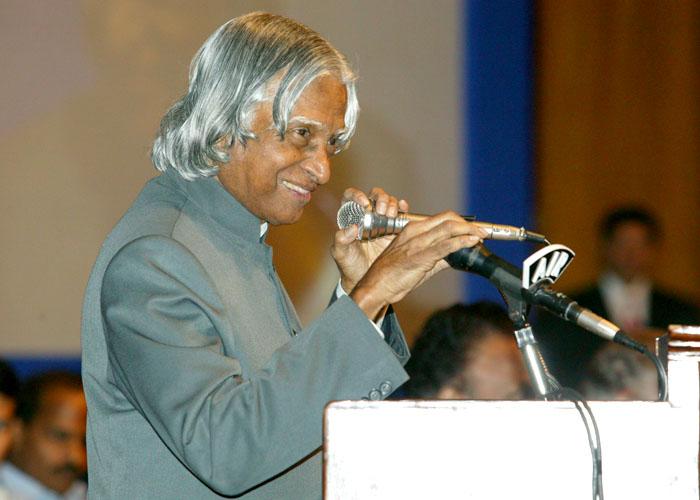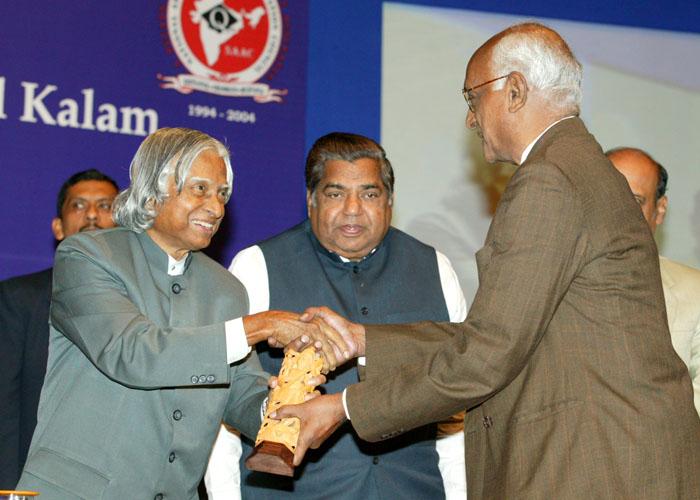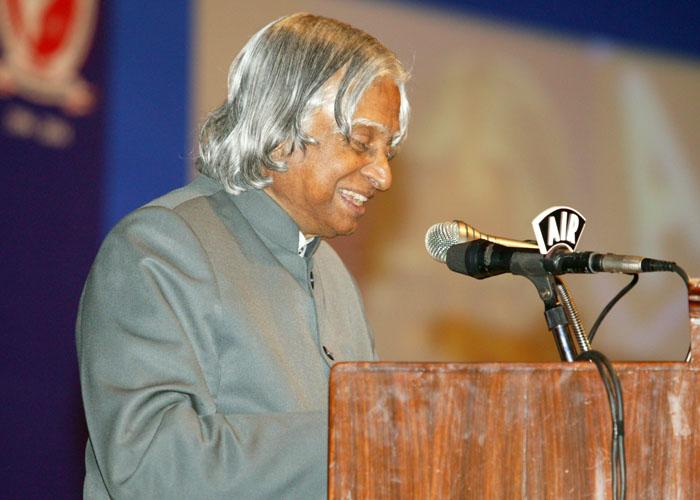Address At The Decennial Year Celebrationsof The National Assessment And Accreditation Council (Naac)
Bangalore : 05-11-2004
MISSIONS FOR NAAC
I am indeed delighted to participate in the Decennial Year Celebrations of the National Assessment and Accreditation Council. My greetings to the organizers, University Grants Commission, Professors, accredited universities and colleges on this occasion. Providing quality education to our youth is the need of the hour. I am happy to note that the National Assessment and Accreditation Council is working with a mission of arranging periodic assessment and accreditation of institutions for promoting quality of teaching, learning and research in higher education. I understand that the Council is also undertaking quality related research studies, consultancies and training programmes.
I was recently studying the economy of Pondicherry Union Territory in detail, with reference to literacy, population growth rate and cultivated land area. I found that higher the literacy growth rate in a region, the population growth rate reduces and the cultivated land area increases. This result is for me, a very important relationship for national planning of development. This relationship emphasizes that education and particularly a liberal education with human values, is the answer to obtain prosperity and happiness for our people, through small families, wisely cultivated lands and the right choice of crops. In addition the development of any nation is directly related to the quality of education which their higher education system imparts. How do we achieve this? I would now discuss the capacities required to be built up among the students by the education system.
How do we build quality capability among the students? Quality in Capability building is powered by quality teaching. Quality teaching is powered by quality teachers who love teaching. Quality teacher is powered by quality knowledge and technology systems. Quality knowledge and technology systems are ultimately powered by research and intellectual ambience. Research and intellectual ambience are powered by evolution for vision of education. I would now discuss the capacities required to be built up among the students by the education system.
Capacity Building Model
When the students come out of the University certain capacities are required to be built in them for enabling them to face the challenges in the real world, in their professional career and also facilitate their participation in the task of national development. I suggest that the ingredients for capacity building must be embedded right from the beginning of the students? life. A good educational model is the need of the hour to ensure that the students grow to contribute towards the economic growth of a nation. I am sure that the University is paying attention to this need.
For participating in the nation building tasks, the capacities required to be built among the students in their formative years by the educational institutions are: The capacity for research or inquiry, the capacity for Creativity and Innovation, particularly the creative transfer of knowledge, the capacity to use high technology, the capacity for Entrepreneurial Leadership and the capacity for Moral Leadership.
a. Research and enquiry:
The 21st century is about the management of all the knowledge and information we have generated and the value addition we bring to it. We must give our students the skills with which they find a way through the sea of knowledge that we have created and continue with life long learning. Today, we have the ability, through technology, to really and truly teach ourselves to become the life-long learners. This is required for sustained economic development, material and individual prosperity.
b. Creativity and innovation: The management of knowledge in the 21st century is beyond the capacity of a single individual. The amount of information that we have around is overwhelming. The management of knowledge therefore must move out of the realm of the individual and shift into the realm of the networked groups. The students must learn how to manage knowledge collectively and to work in multi-disciplinary teams. When the information is networked the power and utility of the information grows as squared as predicted by Metcalfe's law. An information that is static does not grow. In the new digital economy information that is circulated creates innovation and contributes to national wealth.
c. Capacity to use high technology: Every student in our schools should learn to know how to use the latest technologies for aiding their learning process. Universities should equip themselves with adequate computing equipment, laboratory equipments, and Internet facilities and provide an environment for the students to enhance their learning ability. In the midst of all of the technological innovations and revolutions we cannot think that the role of the teachers will be diminished. In fact the teacher will become even more important and the whole world of education will become teacher assisted and would help in ?tele-porting? the best teacher to every nook and corner of the country and propagate the knowledge. The teacher becomes a facilitator and knowledge manager.
d. Entrepreneurship: The aptitude for entrepreneurship should be cultivated right from the beginning and in the university environment. We must teach our students to take calculated risks for the sake of larger gain, but within the ethos of good business. They should also cultivate a disposition to do things right. This capacity will enable them to take up challenging tasks later.
e. Moral leadership: Moral leadership involves two aspects. First it requires the ability to have compelling and powerful dreams or visions of human betterment. Moral leadership requires a disposition to do the right thing and influence others also to do right things.
In sum, inquiry, creativity, technology, entrepreneurial and moral leadership are the five capacities required to be built through the education process. If we develop in all our students these five capacities, we will produce ?Autonomous Learner? a self-directed, self controlled, lifelong learner who will have the capacity to both, respect authority and at the same time is capable of questioning authority, in an appropriate manner. These are the leaders who would work together as a ?Self-organizing Network? and transform any nation into a developed nation in a time bound manner. The question which arises in our mind is, how we can ensure that our Universities, colleges and programmes have built this capacity in them for ensuring generation enlightened quality graduates, post-graduates and doctorates from the University. This I consider is the task of National Assessment and Accreditation Council (NAAC).
Performance of NAAC
For evaluating the academic performance of colleges and universities, NAAC has identified seven criteria to serve as a basis for its assessment procedure viz. curricular aspects, teaching ? learning evaluation, research consultancy and extension, infrastructure and learning resources, students support and progression, organization and management and healthy practices. The institution highlights its functioning with reference to these criteria. Based on this self study report a team of peers, visits the institution, studies and gives a score that reflects the institutional grade. As a third step the executive committee of the NAAC reviews the report and takes a decision about the grade of the institution. So far in the last ten years, I find that the NAAC has accredited 111 out of 306 Universities and 1910 out of over 15000 colleges in the country. I consider that there is definitely a need to increase the pace of accreditation by creating professional agencies.
Suggestions for NAAC
In the next decade, I would recommend that NAAC may consider incorporation of the following modifications to be accreditation system:-
a. The criteria for assessment may include the expenses to be incurred by the students. To bring down the cost of education we should explore the possibility of using tele-education so that a good teacher can teach much larger number of students than he or she can teach in a real class room. This is all the more relevant since EDUSAT is up in the orbit and waiting to be used.
b. NAAC has a unique experience of having studied more than 1900 colleges. While evaluating NAAC would have found that for each of the criteria used in the evaluation there is a college or university whose practices are the best and would stand out as symbol of that practice. This experience should lead to evolution of a book of experience with a title ?great institutions of higher learning?. In order to be exclusive the number should not exceed 30. This will also be used as an All India ranking for the universities and colleges for the students when they decide to join the higher education system.
c. Another method of bringing down the cost of education is through generation of quality content in digital form? text books, lecture material and lecture notes and work books by renowned teachers and good students. One advantage of using digital content is that we could over lay multiple languages and make the education system reach all parts of the country. The contribution of colleges and universities in this direction should also find a place in the evaluation system.
d. Transparency in the admission process is one of the important elements for promoting a healthy education system. The fairness of the admission process followed should also become one of the criteria in the assessment process.
e. The students coming out from the colleges and universities are finally deployed in the agricultural, manufacturing and the service sector of the nation. There must be a feedback generated by the user agency about the contribution of the students of the particular university or college in the work environment. This is the final test of the capability of the institution to build the relevant capacity for contribution among their students.
f. The constitution of the peer review committee should be designed to include members drawn from academia, industry, service sectors, agriculture, representative of parents and societal personalities.
g. Since there is a large backlog of institutions to be accredited, I would suggest NAAC to select private sector accreditation agencies and train them for undertaking an objective accreditation task with severe penalties for any attempt to compromise the stated objectives of accreditation. This approach had been very successful in the software industry ? Capability Maturity Model and in the manufacturing industry by ISO 9000 certificate.
Conclusion
Ultimately education in its real sense is the pursuit of truth. It is an endless journey through knowledge and enlightenment. Such a journey opens up new vistas of development of humanism where there is no scope nor room for pettiness, disharmony, jealousy, hatred or enmity. It transforms a human being into a wholesome whole, a noble soul and an asset to the universe. Universal brotherhood in its true sense becomes the sheet anchor for such education. Real education enhances the dignity of a human being and increases his self-respect. If only the real sense of education could be realized by each individual, and carried forward in every field of human activity the world will be so much a better place to live in.
The Mission of National Assessment and Accreditation Council is to ensure that our higher educational system is fully tuned towards creation of enlightened citizens who in turn will transform India into a prosperous, happy, strong and safe nation.
May God bless you.



